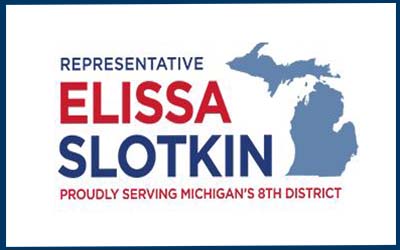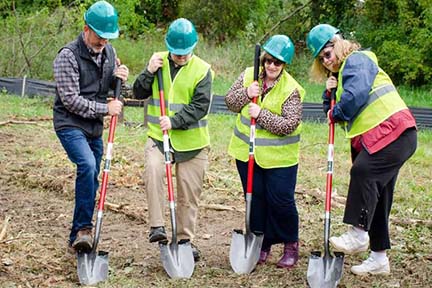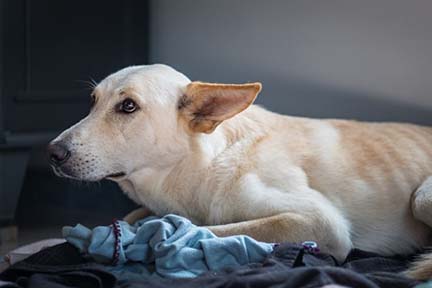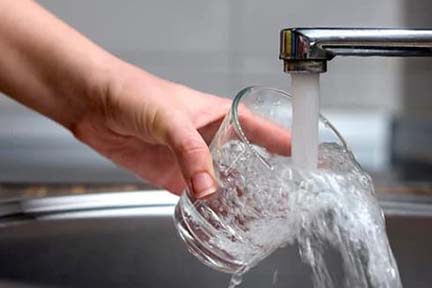
DNR News: Checking in on young walleye
|
|
|||
 |
|||
DNR News |
|||
|

|
|
|||
 |
|||
DNR News |
|||
|

|
|||
|
|
|||
| Dear Constituent,
We wanted to share some important information regarding federal assistance for those affected by the excessive rain that occurred in 2023 between July 13 and September 1. If you own or operate a small business, small agricultural cooperative, or a private non profit organization in Michigan that was affected by the rains, you may be eligible for federal working capital loans. The Small Business Administration’s Economic Injury Disaster Loan program is available to eligible farm-related and nonfarm-related entities that suffered financial losses as a direct result of this disaster. In our congressional district, residents in Shiawasee County and Genesee County are eligible. Elsewhere in the state, residents in the following counties are eligible: Bay, Gratiot, Huron, Lapeer, Midland, Saginaw, Sanilac, Shiawassee, St. Clair, and Tuscola. The filing deadline for loans is October 15, 2024. Click here for more information about eligibility and how to apply. |

Rochester Hills, Mich. – Oakland County, Rochester Housing Solutions and Three Oaks Communities are collaborating to build the county’s first neuro-inclusive neighborhood, Walton Oaks in Rochester Hills. This community is the second in Michigan featuring homes for sale to the public and homebuyers with developmental disabilities.
“Walton Oaks is a groundbreaking project that embodies the spirit of inclusion and community that we strive for in Oakland County,” Oakland County Executive Dave Coulter said during a news conference about Walton Oaks today. “By creating spaces where people of all abilities can live together, we are building more than homes — we are fostering opportunities for independence, belonging and growth.”
Oakland County Commissioner Brendan Johnson, who represents a portion of Rochester Hills, agrees.
“Walton Oaks is a prime example of how we can innovate housing to create more inclusive communities in Oakland County, and I am proud to pioneer this right here in Rochester Hills,” Johnson said. “This project shows the power of collaboration in ensuring individuals of all abilities can live independently and thrive alongside their neighbors.”
Three Oaks Communities and Rochester Housing Solutions will provide homebuyers of all abilities customizable homes within a welcoming community that promotes home ownership, supported independent living and proximity to friends, family, employment and local resources for residents with special needs.
“This development is magic for me and Carly,” said Oakland Township resident Maureen Guy, whose 36-year-old daughter Carly will be among the first residents of Walton Oaks. “She will be living her dream with friends and activities galore and a home of her own. It’s an amazing, wonderful thing.”
Walton Oaks, located off Walton Boulevard across the street from Oakland University, will feature 11 ranch homes on one-third acre lots with a private road. Three of the homes have been reserved and customized for adults with intellectual and developmental disabilities with input from their families.
The project has both public and private support from the Oakland Together Housing Trust Fund (HTF), First State Bank, and private equity partners. The HTF has invested $500,000 into the project.
“The Oakland Together Housing Trust Fund is honored to support Walton Oaks, a development that truly reflects the values of equity and inclusion,” said Oakland County Neighborhood & Housing Development Officer Khadija Walker-Fobbs. “This partnership not only creates innovative housing solutions for individuals with developmental disabilities but also sets a precedent for how communities can be designed to meet the diverse needs of all residents.”
Rochester Housing Solutions (RHS), a nonprofit founded in 2020 by several dozen local families, spearheaded the initiative to create a neuro-inclusive neighborhood in the Rochester Hills area. These families sought safe, sustainable and permanent housing for their adult children with disabilities. RHS partnered with Three Oaks Communities, which is known for its innovative approach and success in building Michigan’s first neuro-inclusive residential development in Saline.
“Walton Oaks represents the culmination of years of dedication by families and advocates who believe in creating inclusive communities,” said David Mingle, chair of Rochester Housing Solutions. “This neighborhood is more than just housing – it’s about providing a place where adults with developmental disabilities can truly thrive, living alongside their neighbors in a supportive, integrated environment.”
Each unique neighborhood will address the needs of the individuals with developmental disabilities who live there, with input from those individuals and their families. Walton Oaks will include three homes for people with disabilities, each with multiple bedroom suites. All suites designated for adults with disabilities have been reserved at this location.
“Walton Oaks is a testament to what can be achieved when we design with inclusion at the forefront,” said Bill Godfrey, co-founder of Three Oaks Communities. “Our goal is to provide homes that meet the unique needs of residents with developmental disabilities while fostering a sense of community for everyone.”
This collaboration on building neuro-inclusive neighborhoods will continue with Auburn Oaks on Auburn Road near Crooks Road in Rochester Hills. This neighborhood will include a combination of townhomes, condominiums, and single-family homes, with up to 24 units designated for adults with disabilities. A groundbreaking is anticipated in the spring of 2025. The HTF has also invested $1.5 million into the Auburn Oaks development.
“It’s hard for me to even put into words what this means for us. Not just because of this project, but because once people see this and find out what it’s like and that it’s possible,” Maureen Guy said. “And they’re going to be really good neighbors. They are just going to lift the whole neighborhood.”
About Oakland Together Housing Trust Fund
The Oakland Together Housing Trust Fund (HTF) supports the development and preservation of affordable, attainable, workforce, and mixed-income housing throughout Oakland County by leveraging HTF funds with the financial resources of the private sector and other governmental funding sources. The Oakland County Board of Commissioners allocated $18 million in American Rescue Plan Act (ARPA) funds and a $2 million annual appropriation of general funds. The HTF is governed by a seven-member board populated with representatives that have relevant residential development, funding and/or oversight experience. HTF funds are allocated through an application process that prioritizes developments that meet the specific goals and needs of the county and its community partners.
About Three Oaks Communities
Based in Plymouth, Mich., Three Oaks Communities (“Three Oaks”) is the first private developer in the United States to build neuro-inclusive neighborhoods that include homes for sale to neurotypical homebuyers as well as adults with intellectual and developmental disabilities (“I/DD”) and their families. Three Oaks’ unique development concept also includes caregiving and support services that are organized by the families of our I/DD homebuyers. Its concept is also aligned with the U.S. Department of Health and Human Service guidance for home and community-based housing and services, promoting greater independence, autonomy, choice, privacy, dignity, respect, and community integration for all its I/DD homebuyers. The principals of Three Oaks are William J. Godfrey, John E. Zdanowski, and Bruce A. Michael.
About Rochester Housing Solutions
Rochester Housing Solutions (RHS) is a nonprofit founded in 2020 to create long-term, inclusive housing options for adults with Intellectual and Developmental Disabilities (IDD). Originating from a group of families in the Rochester Hills area, RHS formed to address the need for homeownership opportunities for their adult children. RHS began collaborating with Three Oaks Communities several years ago to develop plans for two neuro-inclusive neighborhoods in Rochester Hills. Three Oaks Communities was one of the pioneers in the development of neighborhoods for people with and without intellectual disabilities. Since its inception, RHS has grown steadily, with 39 families now actively involved and strong demand for its housing. Walton Oaks, located near Oakland University, will feature three fully reserved homes for adults with IDD, while Auburn Oaks offers a mix of condos for both IDD and neurotypical residents. These unique neighborhoods foster diversity, independence, and community, offering both purchase and rental options for families and individuals who value a supportive and integrated lifestyle.

|

|